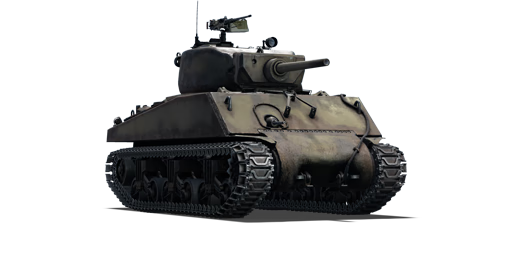The M4A3E2 Sherman - Assault Tank is an armoured modification of the M4A3, which is the fourth variant of the early-generation Medium Tank M4 (Sherman) family. The U.S. Army decided in early 1944 that they needed an armoured version of a medium tank for an assault role in the forthcoming European Theatre of Operations (ETO). However, they had previously rejected proposals for such a vehicle, and time was running out. The decision was made to modify the newest standard U.S. Army medium tank of the time, the M4A3 Sherman, since the new T26E1-1 heavy tank prototype would not be ready in time and earlier designs had been completely inadequate for the role. The vehicle evolved into the M4A3E2 Sherman - Assault tank, sometimes known as the Sherman Jumbo. With only 254 units constructed, it constituted less than 1% of overall M4 Sherman production. However, its unique design made a lasting impression, making it one of the most widely recognized M4 Sherman variants. It should be emphasized that the term 'Jumbo' does not exist in any military material and is probably certainly a post-war nickname, possibly developed by a model organization. An extra 38 mm of armour plate was to be welded to the upper hull front and sides of the M4A3 variant, bringing the overall thickness to 101 mm on the front and 76 mm on the sides. The back upper hull and top, as well as the lower hull, remained unmodified. The turret was based on the T23 turret and had a similar interior arrangement as well as a complete basket, however, the pistol port was removed. The thickness was about 152 mm all around, however, it reduced to 63 mm at the back below the bulge. The 75 mm M3 tank gun was mounted in a modified M62 Gun mount designed for the 76 mm M1 tank gun. The M62's original 50 mm cast gun shield was reinforced with an additional 127 mm armour plate, resulting in a massive mantlet that covered over three-quarters of the turret front.
Introduced in Update 1.45 "Steel Generals", the M4A3E2 is a makeshift heavy tank based on the original M4A3 Sherman variant. Though it appears to be a standard M4A3 Sherman medium tank, it can absorb significantly more damage than any M4 Sherman variants and can efficiently assault enemy positions. The majority of common enemies in the M4A3E2 ranks struggle to penetrate this vehicle from the front. As you use the M4A3E2 to spearhead an aggressive drive, opponents will typically direct their fire towards you, letting your teammates attack enemy targets without less pressure. However, despite its impressive protection, the 75 mm M3 tank gun in the M4A3E2 is lacklustre. It lacks the armour penetration to engage most opponents within its ranks from the front. In order to properly destroy enemy vehicles, players will frequently have to flank the enemies for the weaker side armour. The M4A3E2 tracks have been enlarged with duckbill connectors to spread the tank's increased weight over a larger area, and a more powerful engine has been added to improve mobility.















